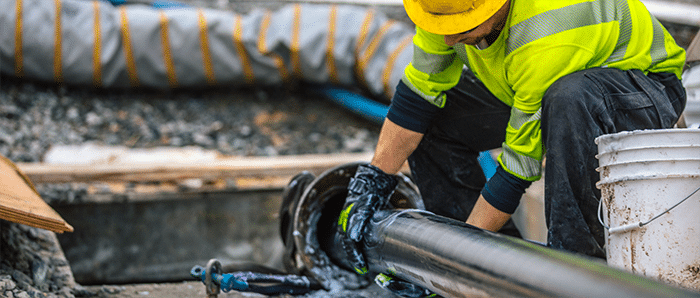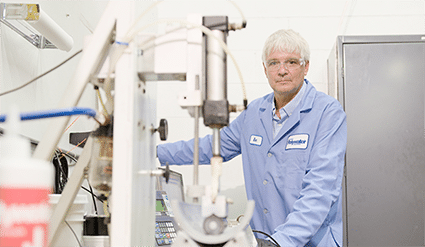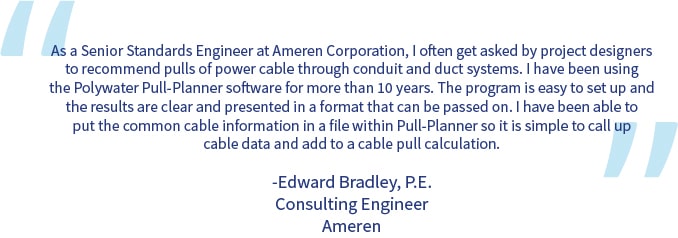Total Cost of Ownership: Tools for Your Future
The electric distribution grid of the future will be a modern, integrated system that accommodates distributed energy resources such as rooftop solar, fuel cells, storage, and vehicle-to-grid electric vehicles (EV). Modern planners and engineers understand the value of analyzing the total cost of ownership. Mike Beehler submits that we need to achieve 50% underground by 2040.

The electric distribution grid of the future will be a modern, integrated system that accommodates distributed energy resources such as rooftop solar, fuel cells, storage, and vehicle-to-grid electric vehicles (EV). This increasingly complex grid must be safe, reliable, and more resilient than ever as we deliver clean and affordable electricity for our future. Southern California Edison boldly proclaims this grid of the future to be the “Re-Imagined Grid.” Other leading utilities worldwide are doing the same. It will not be our “grandfather’s” transmission and distribution (T&D) system built with designs from the 1950s and ’60s, but rather a 21st century grid that employs proven technologies to drive real costs out of the planning, design, construction, operations, and maintenance (O&M) of T&D assets over their life.
Modern planners and engineers understand the value of analyzing the total cost of ownership as they increasingly demonstrate that underground electrical distribution is the prudent choice for utilities, regulators, customers, and shareholders. Therefore, as the world sets ambitious goals for clean electricity, it must do the same for the new and “re-imagined” distribution grid that delivers that electricity. We submit that we need to achieve 50% underground by 2040.

Dramatic increases in underground installation by 2040 will require proven planning and design tools, innovative construction methods, and progressive O&M practices that use valuable field data to maximize a T&D asset‘s value and extend its usable life. Polywater® is leading the way with user-friendly design software, outstanding cable lubrication products, and a dedication to industry-leading research and development (R&D). Their scientific advances help drive cost from underground systems.
| Related Content: FAQ – Cable Pulling, Lubrication, and Tension |
Planning and Design
Ambitious goals for the energy and T&D industry will require hundreds or, perhaps, thousands of new planners and engineers, some who’ve never yet designed an underground electric distribution system. These people will need to understand the state-of-the-art principles of underground planning and design. In fact, nothing less will be acceptable. More thought-leading companies like Polywater will emerge to assist engineers in this new, exciting, and ambitious endeavor. Successful undergrounding projects will build the “re-imagined grid” and careers for years to come.
Most engineers embrace learning and studying technology. Industry partners like Polywater can help their client engineers with a solid understanding of 21st century underground design. Other companies will likely do the same. Cable suppliers, O&M companies, and civil contractors will also help. However, planning starts with layout design options based on predicted cable tensions. High-performance cable lubricants reduce cable tension and increase installation efficiency. They are an essential component of electric underground distribution systems.

Understanding this, Polywater goes directly to the engineer with a tool to make them successful. Polywater’s free Pull-Planner™ design software is used by engineers worldwide to predict maximum cable pulling tensions and duct sidewall pressures. The software, which also calculates cable jamming probability and optimal pull direction, is useful in designing efficient cable systems with longer runs and fewer splices. Design software allows the engineer to review different raceway scenarios. This analysis can eliminate manholes and vaults, lowering the cost of infrastructure and reducing disruption to vehicle traffic flow. Polywater developed this impressive software based on industry standards, hands-on testing, and feedback from users in the field. Polywater’s extensive coefficient of friction database, accumulated over decades of research, is a unique and critical feature of this software. This research is active as Polywater continues to test new cable and jacket designs.
| Related Product: Polywater Pull-Planner Software |
Construction professionals and engineers play an important role by recording as-built cable pulling tension and then determining the actual coefficient of friction in the conduit via the back calculation feature built into the software. This real-world coefficient of friction information is crucial for planners and engineers. It allows them to custom design new systems that don’t exceed the maximum pulling tension limits established by cable manufacturers.
This leads to the safe and efficient installation of future projects. Good raceway design and installation planning can reduce cable damage. We know that damage from excess installation tensions can remain hidden for years but will ultimately reduce the cable life expectancy. Antiquated standards from the 1950s and ’60s for maximum pulling tensions, cable lengths, splices, and manhole locations can be replaced with 21st century designs that improve the safety, reliability, and resiliency of the T&D system. These will also reduce the total cost of ownership over the life of the asset. This is the new standard and Polywater is proud to be an integral part of it.
Products
Polywater has led the industry in cable lubrication products since its founding in 1973. Cable lubricants are an important aspect of the planning, design, and construction of electric underground distribution systems. We know that proper application and use of quality cable lubricants reduces capital costs on new installations, extends cable lifespans, and helps to verify that cables are installed correctly and safely, thus reducing the risk of damage or failure. The result is a lower total cost of ownership of these underground systems over the life of the assets.

Engineers and construction professionals use a variety of specialized tools and techniques to accurately record as-built cable pulling tension and determine the coefficient of friction. These tools may include tension meters, load cells, and other devices that measure the forces acting on the cables during installation. Again, recording accurate field data on pulling tensions must be specified in the construction documents or obtained by utility crews, inspectors, or field engineers. Future use of real field data to back calculate the field coefficients of friction is a game changer. When utilities like PG&E are imploring the industry to provide new, innovative solutions for their huge $15-$30 billion underground program, there is no reason to rely on old standards that dictate a “one size fits all” maximum distance between manholes. Equipment manufacturers are building more powerful equipment. State-of-the-art lubricants can extend safe pulls by thousands of feet. Specification-grade cable lubricants allow contractors to more easily and efficiently install cables with fewer manholes, thereby reducing the time and resources needed for a project. This leads to real savings that can be passed to the utility customer, ultimately lowering the total cost of ownership of an underground system. Building the grid of the future around the world is more achievable than ever before.
| Related Content: Hawaiian Electrical Company (HECO) and the Pearl Harbor Cable Pull |
Polywater believes that another benefit of using specification-grade cable lubricants is extended cable lifespan. Specification-grade lubricants are chemically compatible with cable jackets. This is critically important because some lubricant residue may be in contact with the cable for decades. New underground cables are also subjected to high tension and wear and tear during installation. Proper lubrication reduces friction. This results in less stress on cables when installed, preserving factory integrity, and providing longer service life. Again, good design and construction practices supported by software tools and quality cable lubricants reduce the total lifetime cost of T&D asset ownership.
R&D for Your Future
 Polywater has an industry-leading research and development (R&D) program to drive cost from underground systems. They continue to introduce new lubricants and installation methods as material science advances. Polywater strives to improve their products and software as construction equipment capabilities change. They support the use of design and construction data to advance how today’s progressive engineers and contractors plan, design, and construct underground systems. Advancements in material science give Polywater R&D scientists new and unique ways to innovate proprietary installation products that are cable compatible, environmentally benign, and simple to use. They actively develop and test these new products and are always looking for opportunities to work interactively with customers to complete projects at the lowest cost.
Polywater has an industry-leading research and development (R&D) program to drive cost from underground systems. They continue to introduce new lubricants and installation methods as material science advances. Polywater strives to improve their products and software as construction equipment capabilities change. They support the use of design and construction data to advance how today’s progressive engineers and contractors plan, design, and construct underground systems. Advancements in material science give Polywater R&D scientists new and unique ways to innovate proprietary installation products that are cable compatible, environmentally benign, and simple to use. They actively develop and test these new products and are always looking for opportunities to work interactively with customers to complete projects at the lowest cost.
| Related Content: Cable Compatibility in Undergrounding |
Polywater uses research and testing to maximize lubrication efficiency and develop realistic coefficient of friction guidance. Their free Pull-Planner design software is always a work of continuous improvement. Their sealant and lubricant calculators rely on best practices from around the world to help engineers and contractors accurately apply their products. This is especially important for undergrounding as drilling and boring equipment manufacturers build smaller, more powerful equipment with digital performance data for today’s younger operators. Artificial intelligence is best used with rich data sources. Polywater leads the industry on access to valuable data on in-situ pulling tensions that can be converted into better plans, designs, and construction of the underground systems of the future. Can we further improve this with AI and turn our valuable data into information and action in the field, action that drives down the total cost of ownership of T&D assets? Time will tell, but Polywater is researching it.
Discover Polywater’s variety of cable-pulling lubricants that reduce friction and cable tension that are widely trusted for use in critical transmission, mass transit systems, and other installations where failure is not an option.


